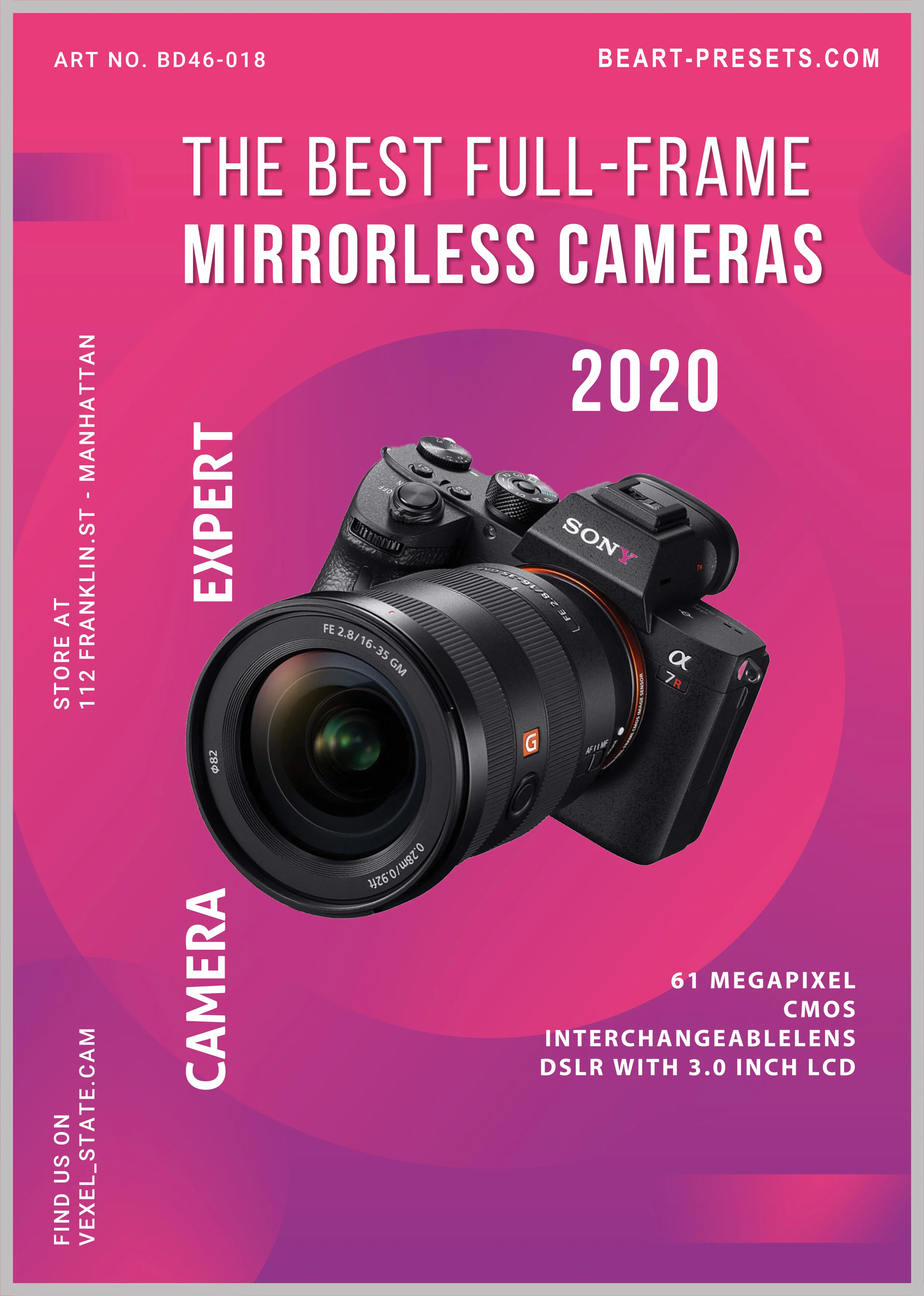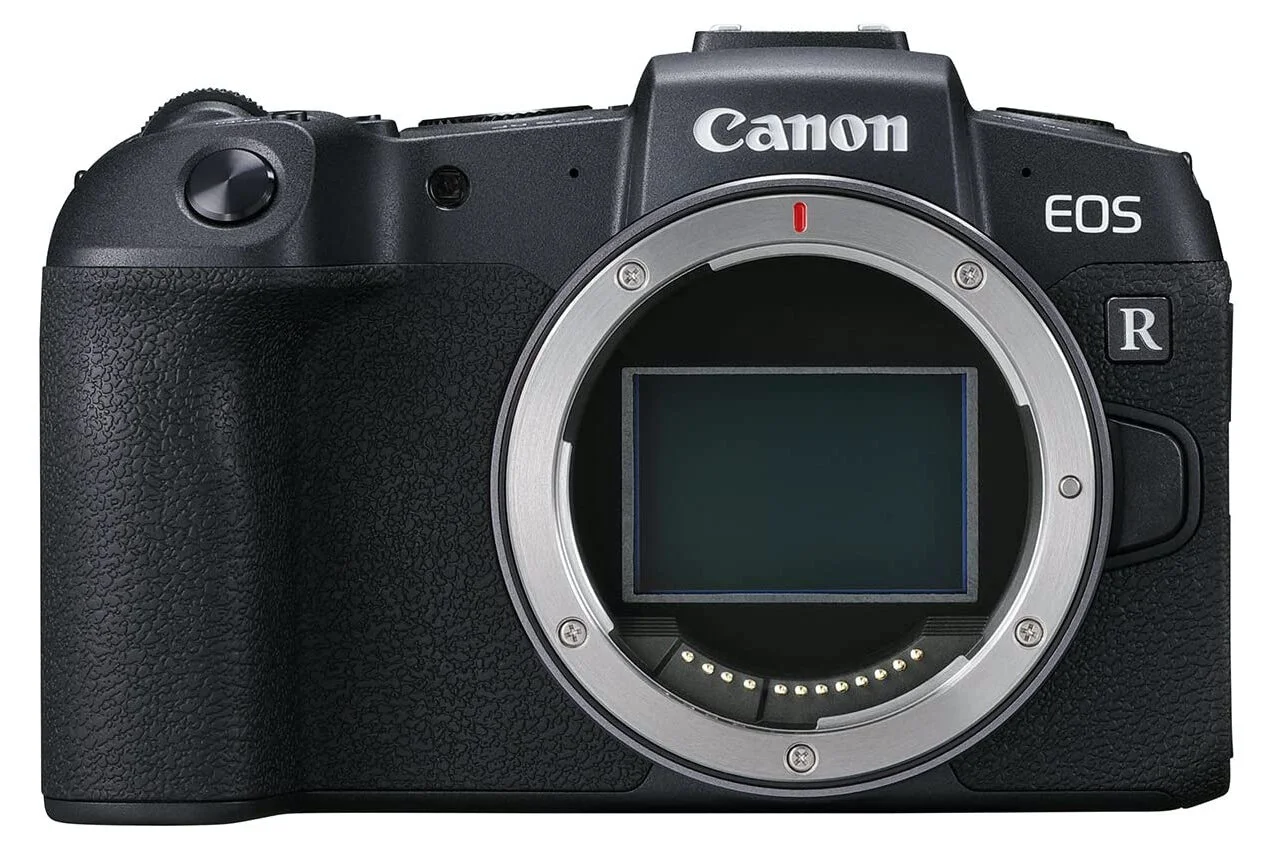Here are the best Full-frame Mirrorless Cameras in 2020
If you're on the market for an excellent full-frame mirrorless camera, there are several things to consider - not the least of which is that you'll need to weigh your options very carefully. There are now numerous models in a market that once only had a few players.
Why a Full-Frame?
Full-frame sensors were once found only in the more substantial shells of DSLR cameras. Then in 2013, Sony launched the first mirrorless full-frame model, the Alpha A7. It ultimately proved to be a game-changer for the industry! Today, full-frame cameras are notable because they contain large sensors and can produce high-quality images – particularly ones shot at high ISOs.
Finally, in 2018 other big manufacturers entered the full-frame market. Nikon, Canon, and Panasonic introduced mirrorless cameras with full-frame sensors. There's never been a better time for buyers to buy full-frames, particularly when it comes to the number of choices, including bodies and lenses, as well as advanced shooting features.
So, with all this in mind, how do you choose a full-frame mirrorless camera to purchase? And is there a top selection? If we had to choose one, it would probably be the Nikon Z6. It's small, a light shell that's easy to handle, its stellar performance, and its relatively affordable price tag make it a top choice.
Later in this post, we will take a look at a list of seven top performers, starting with the Nikon Z6. First, here are some points to consider as you look for a camera.
What should you look for?
You'll want to consider various elements in a full-frame mirrorless camera. The sensor is a critical element in a camera, but so are the lens options available. Some photographers are also interested in what options are in the development pipeline to be brought to market by manufacturers.
Sony is the elder statesman in this area of the industry, which means they have a wide line-up of cameras.
Others are newer and might offer more limited options of lens and accessories.
Consider if the accessories are in your price range.
We also suggest checking out the design and resolution of electronic viewfinders (EVFs) and LCD screens because they can vary considerably across these models.
If you shoot a lot of burst images, you'll want to consider the burst rate and likely the burst depth as well.
Look at the continuous focus information.
Do other lenses you own fit, via an adapter, the camera you're considering? For that matter, can you find an adapter that works for your camera?
If videos are essential to you, you'll likely prefer a lower-resolution sensor, ports for microphones and headphones.
As we stated earlier, there are many good options to select from. There are also varying price points. Here's our ranking of the top seven options in 2020 for full-frame mirrorless cameras. The prices are approximate.
Best full-frame mirrorless cameras 2020
1) Nikon Z6 ($1599-$1799)
User level: Enthusiast/expert
Screen type: 3.0-inch tilt-angle touchscreen, 2,100K dots
Sensor: Full-frame CMOS
Resolution: 24.5MP
Maximum continuous shooting speed: 12fps
Autofocus: 273-point AF
Movies: 4K at 30p
More info:
One card slot is a downside, but at least it's XQD in format.
Great high-ISO results
Excellent electronic viewfinder
Continuous AF could be improved.
It does pretty much anything its big-brother, the Z7, can do, but for less money.
We think it's better than or identical to the Z7.
Handling is identical to the Z7, given their bodies have the same construction.
It has a faster burst shooting rate and a better setup for video recording, too.
It offers built-in five-stop image stabilization, giving it a significant benefit over Nikon's DSLRs.
2) Sony Alpha A7 III ($1799-$1998)
This is Sony's third-generation mirrorless camera, and it's definitely one of our favorites!
User level: Enthusiast/expert
Screen type: 3.0-inch tilt-angle touchscreen, 921,000 dots
Sensor size: Full-frame CMOS
Resolution: 24.2MP
Maximum continuous shooting speed: 10fps
Autofocus: 693-point AF
Movies: 4K
More info:
It offers a good amount of features for its price point.
You get a good amount of detail from the 24MP sensor.
Produces smaller files.
Low-light performance is also very good.
It has an excellent dynamic range.
It offers great image and video quality.
The touchscreen could be better.
It offers five-axis image stabilization.
High-quality video recording.
The countless number of Sony lenses available for the E mount means you'll never struggle to find a good lens.
3) Sony Alpha A7R IV ($3,000-$3400)
This is Sony's medium-format, ultra-high-resolution model.
User level: Expert
Screen type: 3.0-inch tilt-angle touchscreen, 1,440,000 dots
Sensor size: Full-frame CMOS
Resolution: 61MP
Maximum continuous shooting speed: 10fps
Autofocus: 567-point AF
Movies: 4K
More info:
It is the fourth iteration of the A7R.
The A7R IV builds on the foundations of its predecessors: A7R, A7R II, and A7R III.
The newest of Sony's A7 models, the R stands for (superb) "resolution"!
Great handling
Dual card slots
Its 5.76 million-dot viewfinder is the best on the market.
It has effective five-axis image stabilization.
This is not a cheap model.
Its 61 megapixels put it in the medium format territory.
The 4K video is very impressive.
10fps burst shooting
A hybrid AF system is boasting a blistering 567-points.
Eye AF
Battery life is better than the previous model with 530+ shots per charge.
4) Nikon Z7 ($2300-$2796)
This is basically Nikon's D850 in a mirrorless format, with a lot going for it.
User level: Expert
Screen type: 3.2-inch tilt-angle touchscreen, 2,100,000 dots
Sensor size: Full-frame CMOS
Resolution: 45.7MP
Maximum continuous shooting speed: 9fps
Autofocus: 493-point AF
Movies: 4K
More info:
A fabulous, large electronic viewfinder
There's a 2.1 million-dot tilting touchscreen.
A sensor-based image stabilization
Excellent 4K video recording
Its body is much smaller and lighter than its close relatives.
A 9fps burst shooting option.
It has a 493-point AF system that covers a much larger area of the frame than the D850's.
5) Canon EOS RP ($999)
A more reasonably priced camera with some impressive features.
User level: Enthusiast
Screen type: 3-inch vari-angle touchscreen, 1,040,000 dots
Sensor: Full-frame CMOS
Megapixels: 26.2MP
Maximum continuous shooting speed: 5fps
Autofocus: 5,655-point AF
Movies: 4K
A good alternative to the flagship EOS R.
Smaller and lighter than the EOS R, but not as powerful.
Much cheaper than the EOS $.
Very good autofocus
A generous buffer
Great touchscreen that flips out to face the front.
If videos are important to you, this might be your first choice.
Native lens selection is somewhat limited, particularly with its smaller body. But you can use some EF lenses with an adapter.
Limited battery life
6) Panasonic S1R ($2600-$3300)
The Panasonic S1R has a generously sized body with great resolution and generous with its stellar features.
User level: Expert
Sensor: 47.3MP Full-Frame CMOS
Continuous shooting: 9fps
Lens: 24-105mm f/4
Monitor: 3.2-inch tilt-angle touchscreen, 2,100,000 dots
Movies: 4K 60fps
More info:
High-resolution mode captures images at up to 187MP.
Its detail capture is impressive, either in standard shooting or the multi-exposure High-Resolution mode.
It can capture video at 4K/60p.
Its size and weight work against it, feeling more like a traditional DSLR.
Low-light focusing isn't as fast or reliable as some of its rivals.
The in-body stabilization is exceptionally effective.
Probably best-in-class viewfinder
7) Sony A9 II ($4300-$4400)
You get what you pay for with this Sony and its powerful features.
User level: Expert
Screen type: 3.0-inch tilt-angle touchscreen, 1,440,000 dots
Sensor size: Full-frame CMOS
Resolution: 24.2MP
Maximum continuous shooting speed: 5fps (20fps with e-shutter)
Autofocus: 693-phase-detect points
Movies: 4K
More info:
As an update to the original Sony A9, the A9 II builds on that model's impressive speed and power.
There's a huge buffer.
This is a pricey camera, although its features make it very attractive!
Limited touchscreen functionality isn't a plus, and neither is the absence of XQD or CFExpress card slots.
It could use better battery life.
Sony has made tons of minor improvements, catapulting it into serious rival status against the Canon 1DX Mark III and Nikon D6.
The most notable improvements include the larger, deeper grip, making it more comfortable to hold.
It can shoot twice as fast as its predecessor- 10 frames per second.
This is probably the most powerful mirrorless camera you can buy.






















